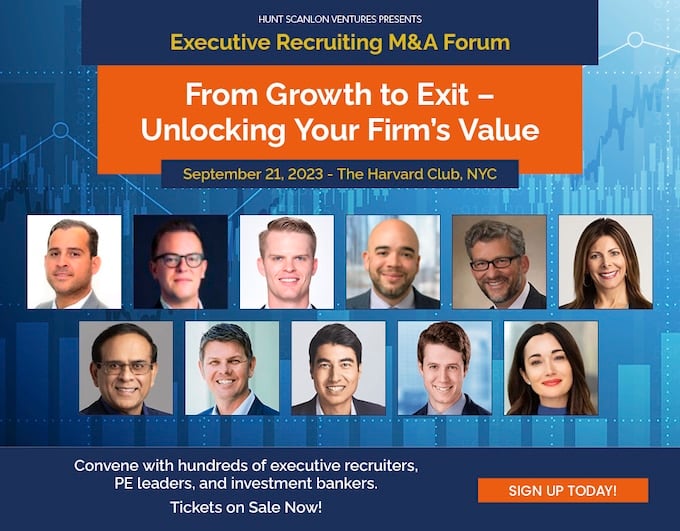Keys to Executive Onboarding at Private Equity Firms

June 20, 2023 – Onboarding plans tend to be generic—and an afterthought. Rarely do they consider the specific context in which a person must do their work and deliver the results expected of them, says a new report from Bill Allen, managing partner of CEO.works. “In private equity, I believe that is a mistake,” said Mr. Allen. “All too often, PE firms almost whitewash context in their rush to fill key leadership roles in their portfolio companies. They don’t look for appropriate evidence that candidates can successfully perform the specific work that needs to be done in the situation at hand. They pull up a historical job description, select an executive who has a credible track record and reputation, and assume that this good person will naturally figure things out. Essentially, they default to HR’s ‘job empty, job filled, job done’ approach, as my colleague Sandy Ogg calls it.”
This imprecision about what the company actually needs of the person in the role can get carried through to their executive onboarding. “Your firm exists to maximize return to its investors. Each fund, each investment is like a limited-time offer,” said Mr. Allen. “You need to bring chosen candidates up to speed to deliver value-based outcomes as quickly as possible. Not only does the job empty, job filled, job done approach overlook the context in which those outcomes must be delivered. It also misses that all-important link between the work, the role, and the value.”
That’s why Mr. Allen tried something different for a critical executive role at a biotech portfolio company with whom he is consulting. He calls this approach “job empty, work defined, risks identified, talent clicked in, job done.” When the opening occurred, Mr. Allen reviewed the context, defined the work and the execution risks, then set up the best possible talent to fully ‘click’ into the global role. He designed the onboarding plan around two things: prioritizing the work necessary to deliver the value expected of the role and mitigating the execution risks.
The Context
As part of an M&A roll-up of vaccine businesses, this particular European-based biotech was being acquired by a larger U.S.-based company in the PE firm’s portfolio. “Governments around the world already relied on both companies to help manufacture, ship, track, and, when necessary, import/export the authorized vaccines and medicines that would keep their populations healthy,” Mr. Allen said. “Orders had to be filled precisely, just in time, without mistakes—and with all necessary paperwork intact. Two smaller acquisitions would provide ancillary biomanufacturing services. If all three planned acquisitions were delivered according to the firm’s plan, $1 billion in enterprise value would arrive in 2023 from their combined operations in 25 countries, along with $150 million in EBITDA.”
The Onboarding Challenge
Mr. Allen points to one founder and CEO of the European business that had grown his company from ground zero to $100 million. The CEO of the American business, the acquiring company in the deal, ran an operation worth $400 million in revenue. “Both were strong-willed leaders, but the firm was not interested in having co-CEOs,” Mr. Allen said. “Sometimes in these cases, one CEO walks off into the sunset with a nice package. However, in this case, the firm truly needed the talents of both leaders to run this big business profitably so it could be sold for a significant gain in a very short period of time.”

Bill Allen, senior partner with CEO.works, has spent 20 years in CHRO roles with three listed companies (AP Moller-Maersk, Macy’s Inc., Atlas Air Holdings). This fellow of the National Academy of Human Resources has lived nearly one third of his career outside the United States and counts his corporate “hometown” as PepsiCo.
Mr. Allen says that only one could be the “boss”/CEO of the amalgamated enterprise—and the firm decided that would be the American. His job was to figure out how to onboard the European into a new role of “president” in a way that would be constructive to his tenure.
The Work and the Risks
CEO.works started by identifying what work at this level in the enterprise would be critical to its future and dividing those “jobs to be done” (JTBDs) between the CEO and president. “Each role would have three unique JTBDs—and they would share two JTBDs related to the integration and synchronization of operations and R&D,” Mr. Allen said. “Both leaders agreed to this division of the company’s most important work.”
Related: Pitfalls to Avoid in Virtual Executive Onboarding
Next, the firm assessed the execution risks. “Several things could challenge the ability of both leaders to deliver on their JTBDs: unclear or irrelevant authority, copious resistance, and insufficient capacity to do all the work in the time available,” said Mr. Allen. “Executives often slide into these challenges because they are not overtly aware of them upfront. To avoid this, we first gave both roles clear authority and appropriate supporting structure to do their JTBDs. Both leaders agreed to their decision rights and the design of the shared organizational infrastructure.”
Second, CEO.works made it clear both leaders had to demonstrate their sense of ‘family’, now including the other to counter the tribalistic resistance that can happen when you bring two business cultures together. “Setting the tone from the top would go a long way as people adapted to shared standards of discipline and profitability,” said Mr. Allen. “And third, we took the time to orient each individual to what they needed to focus on in the first 120 days to ameliorate capacity issues.”
 How to Become a Successful CHRO
How to Become a Successful CHRO
The prevailing characteristic of many successful HR leaders is care. To be precise, care for people. “However, I have the scars on my back to show that a caring nature has to be balanced with rigor if you are to be effective as a new CHRO,” says a new report from Hein Knaapen, managing partner of CEO.works. “Care can have many expressions,” he said. “In my youth, I believed Einstein: “Only a life lived for others is a life worthwhile.” I contemplated becoming a priest. But, somewhat surprisingly to me, I started my career working as a factory personnel officer for Unilever. A decade later, I was an HR director. Within another decade, I was CHRO of Royal KPN, a Dutch telecom. From there, I went on to become ING Bank’s CHRO.”
Mr. Allen notes that the president would be primarily—and solely—accountable for three areas: sales growth, operations, and supply chain. He explains that success in sales growth would be measured in terms of revenue, volume, and market share improvement. Operations and supply chain would be measured in terms of cost, reliability, and quality/compliance. To help the president decipher what he should initially focus on in each area, Mr. Allen asked:
- What processes and policies are currently in place?
- What is already planned?
- Who in the organization can help get you up to speed?
“This inquiry quickly led him to meet with the heads of sales in the United States and Asia, the two most important regions,” Mr. Allen said. “They engaged in a deep dive into customers and employees, as well as existing sales funnel processes, policies related to client selection, and go-to-market plans for new products. From their conversations, he quickly distilled the vital few focal points and initial actions that could set the right trajectory and start to build momentum. The president followed a similarly concentrated process for operations and supply chain. To help him plan, we then laid out all the focal points and initial actions that were uniquely his on a timeline.”
This structured approach to executive onboarding, with its focus on accountability for value creation rather than ‘activities,’ proved to be very powerful, according to Mr. Allen. “Not only did it give the president a clear understanding of past performance, future plans, and team quality,” he said. “It also brought to his attention danger points in his first 120 days (several things happening at once that simply could not) so he could proactively address them. Most important to the company’s and the firm’s results, however, have been the insights he gained into the work to be done to drive value creation and the few areas where value leakage could present significant risk.”
Related: Mastering Employee Onboarding
Contributed by Scott A. Scanlon, Editor-in-Chief; Dale M. Zupsansky, Managing Editor; and Stephen Sawicki, Managing Editor – Hunt Scanlon Media












